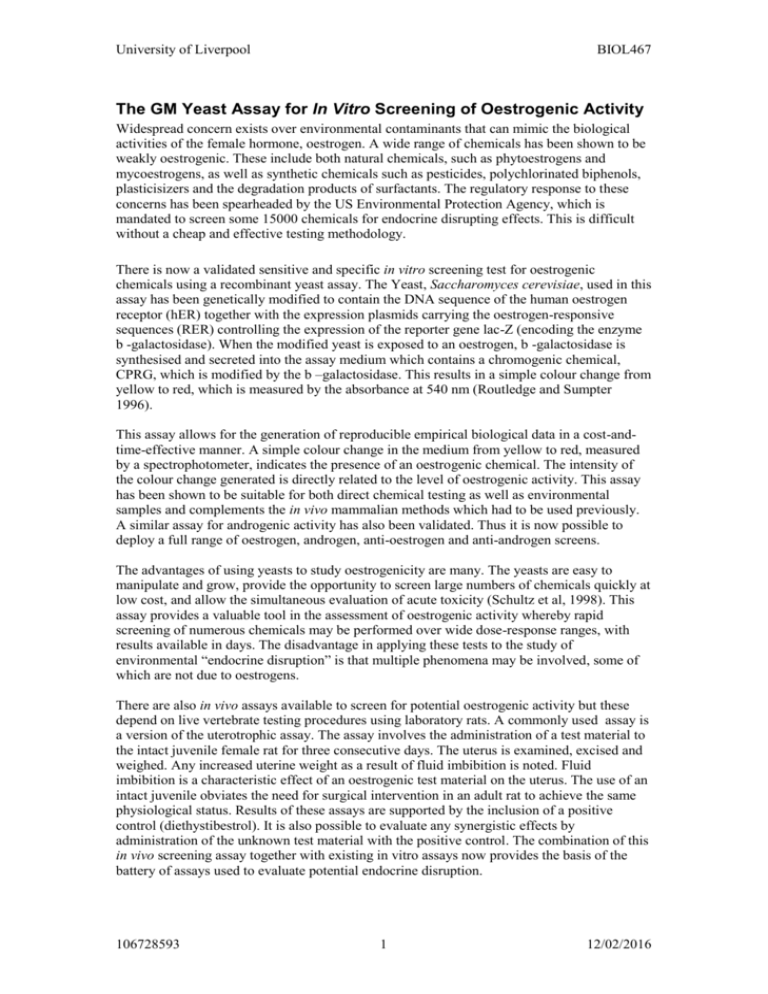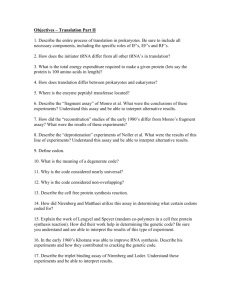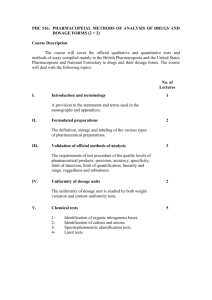Yeast Assay - University of Liverpool
advertisement

University of Liverpool BIOL467 The GM Yeast Assay for In Vitro Screening of Oestrogenic Activity Widespread concern exists over environmental contaminants that can mimic the biological activities of the female hormone, oestrogen. A wide range of chemicals has been shown to be weakly oestrogenic. These include both natural chemicals, such as phytoestrogens and mycoestrogens, as well as synthetic chemicals such as pesticides, polychlorinated biphenols, plasticisizers and the degradation products of surfactants. The regulatory response to these concerns has been spearheaded by the US Environmental Protection Agency, which is mandated to screen some 15000 chemicals for endocrine disrupting effects. This is difficult without a cheap and effective testing methodology. There is now a validated sensitive and specific in vitro screening test for oestrogenic chemicals using a recombinant yeast assay. The Yeast, Saccharomyces cerevisiae, used in this assay has been genetically modified to contain the DNA sequence of the human oestrogen receptor (hER) together with the expression plasmids carrying the oestrogen-responsive sequences (RER) controlling the expression of the reporter gene lac-Z (encoding the enzyme b -galactosidase). When the modified yeast is exposed to an oestrogen, b -galactosidase is synthesised and secreted into the assay medium which contains a chromogenic chemical, CPRG, which is modified by the b –galactosidase. This results in a simple colour change from yellow to red, which is measured by the absorbance at 540 nm (Routledge and Sumpter 1996). This assay allows for the generation of reproducible empirical biological data in a cost-andtime-effective manner. A simple colour change in the medium from yellow to red, measured by a spectrophotometer, indicates the presence of an oestrogenic chemical. The intensity of the colour change generated is directly related to the level of oestrogenic activity. This assay has been shown to be suitable for both direct chemical testing as well as environmental samples and complements the in vivo mammalian methods which had to be used previously. A similar assay for androgenic activity has also been validated. Thus it is now possible to deploy a full range of oestrogen, androgen, anti-oestrogen and anti-androgen screens. The advantages of using yeasts to study oestrogenicity are many. The yeasts are easy to manipulate and grow, provide the opportunity to screen large numbers of chemicals quickly at low cost, and allow the simultaneous evaluation of acute toxicity (Schultz et al, 1998). This assay provides a valuable tool in the assessment of oestrogenic activity whereby rapid screening of numerous chemicals may be performed over wide dose-response ranges, with results available in days. The disadvantage in applying these tests to the study of environmental “endocrine disruption” is that multiple phenomena may be involved, some of which are not due to oestrogens. There are also in vivo assays available to screen for potential oestrogenic activity but these depend on live vertebrate testing procedures using laboratory rats. A commonly used assay is a version of the uterotrophic assay. The assay involves the administration of a test material to the intact juvenile female rat for three consecutive days. The uterus is examined, excised and weighed. Any increased uterine weight as a result of fluid imbibition is noted. Fluid imbibition is a characteristic effect of an oestrogenic test material on the uterus. The use of an intact juvenile obviates the need for surgical intervention in an adult rat to achieve the same physiological status. Results of these assays are supported by the inclusion of a positive control (diethystibestrol). It is also possible to evaluate any synergistic effects by administration of the unknown test material with the positive control. The combination of this in vivo screening assay together with existing in vitro assays now provides the basis of the battery of assays used to evaluate potential endocrine disruption. 106728593 1 12/02/2016 University of Liverpool BIOL467 References Routledge E J and Sumpter J P 1996. Environmental Toxicology and Chemistry 15 p241-248 Schultz T W et al 1998. Environmental Toxicology and Chemistry 17 p1727-1729 Acknowledgements The recombinant yeast strain was developed by GlaxoWellcome Research and Development. Much of the development of the assay was provided by Professor John Sumpter and his colleagues at Brunel University. Schematic Diagram of the Oestrogen-Inducible Expression System in Yeast (After Routledge and Sumpter, 1996) The Yeast, Saccharomyces cerevisiae, used in this assay has been genetically modified to contain the DNA sequence of the human oestrogen receptor (hER) together with the expression plasmids carrying the oestrogen-responsive sequences (RER) controlling the expression of the reporter gene lac-Z (encoding the enzyme b -galactosidase). 106728593 2 12/02/2016




